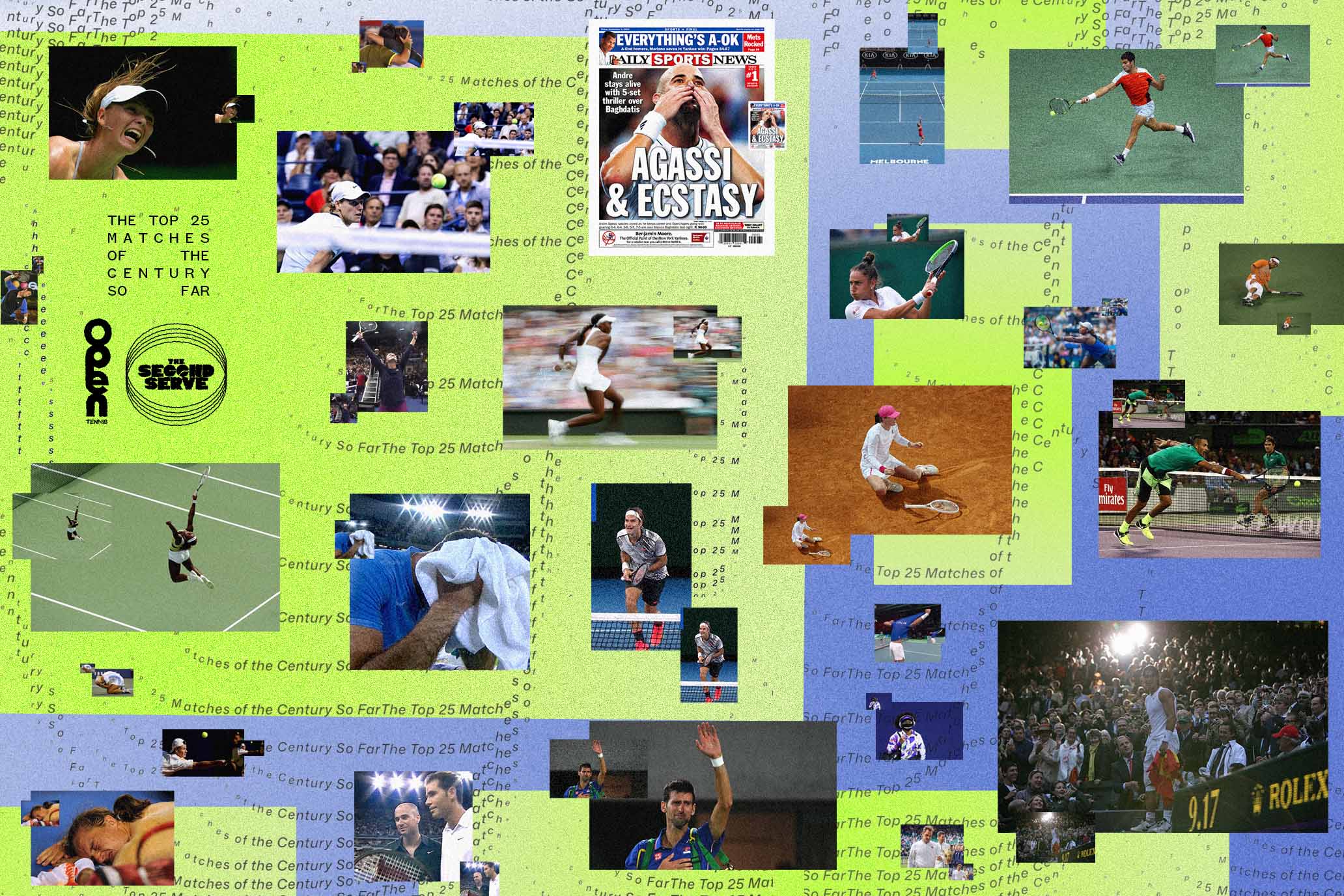High Horse
High Horse
When the All England Club faced the monster under its bed.
When the All England Club faced the monster under its bed.
By Lydia HornePhotography by Tom Parker Featured in Volume 1 of OPEN Tennis — BUY
High Horse
High Horse
When the All England Club faced the monster under its bed.
When the All England Club faced the monster under its bed.
By Lydia HornePhotography by Tom Parker Featured in Volume 1 of OPEN Tennis — BUY
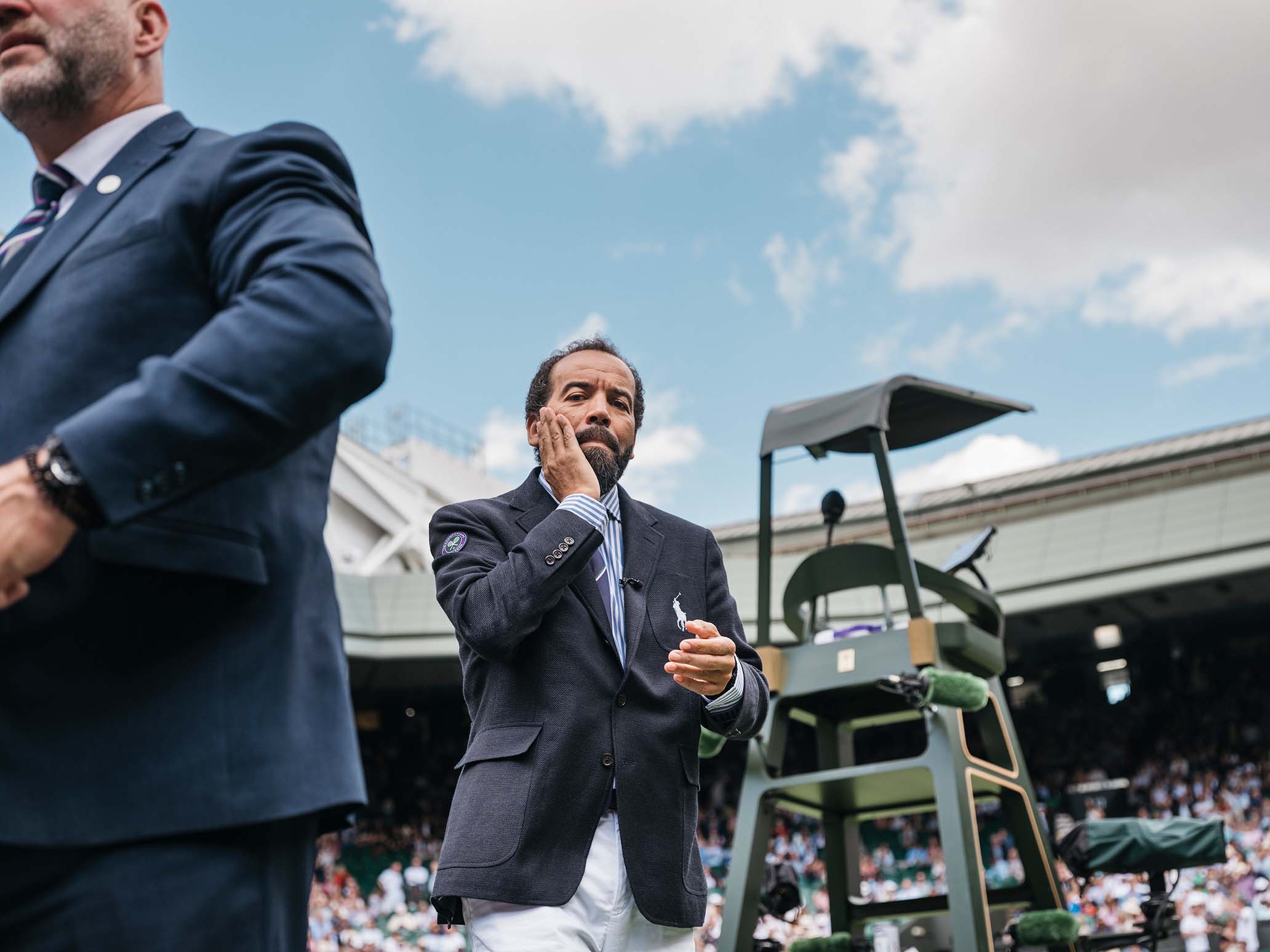

A Wimbledon umpire turns their neck at least 280 times in a match. Along with routine humiliation from athletes with incredibly short fuses, add chafing to the list of occupational hazards.
For almost 130 years, the All England Lawn Tennis and Croquet Club (aka AELTC, Wimbledon’s governing body) took the same approach to their officials’ uniforms as Edwardian parents did to their children: better seen than heard. And best seen at a distance. Uniforms were often the same color as Har-Tru: a powdery bluish-green that did no more for the appearance than did the shapeless blazers and ankle-length skirts. The ball boys, line judges, and umpires were supposed to blend in with the court surface. AELTC even instructed clothing manufacturers to use only dull vintage buttons because the glint off a freshly polished disc could distract a player in a decisive moment.
And so Wimbledon officials muddled on, in their ancient buttons, until a decidedly non-British, non-tennis-playing entrepreneur accessed (and accessorized) the tournament’s brand power. Ralph Lauren, who became the official Wimbledon outfitter in 2006, distilled the all-grass, all-white, all-English club into a newly refined look. It was a win for both AELTC and the designer. Within the pantheon of Ralph Lauren’s attainable luxury lifestyles—including safari, cowboy, yacht—the pedigree-obsessed American designer added strawberries and cream. By elevating the appearance of the rank and file, Ralph Lauren transformed employees’ attire from mandatory uniforms to badges of honor that conveniently function as walking advertisements for the brand.
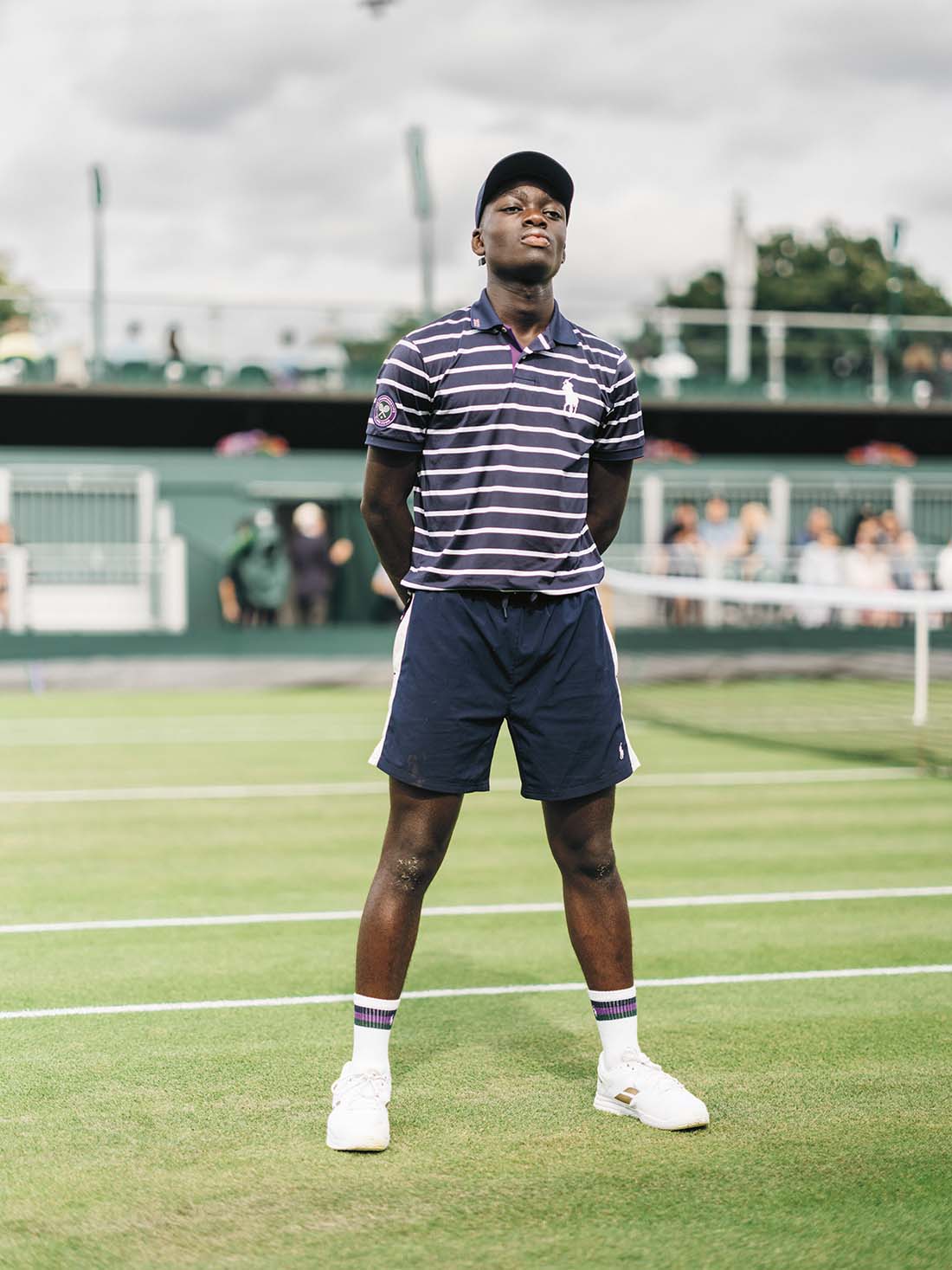
Wimbledon is frozen in amber: It’s averse to late nights (11 p.m. curfew), warm tennis balls (cans are chilled in a fridge at 68℉), and self-expression (mandatory whites). Until the 1920s, women were expected to wear corsets while competing, the undergarments often bloodied at the end of a grueling match. Similar restrictions—especially for female players—have only recently relaxed: In 2023, AELTC finally allowed women to wear colored shorts under their skirts and dresses. It’s therefore unsurprising that the organization is also prudent about advertising; AELTC discourages overt advertising on the grounds and large logos on player clothing. Their few sponsors are reputable brands with whom they share a long relationship: Rolex became the official timekeeper of the tournament in 1978. Slazenger and Wimbledon have the longest-running sports sponsorship in history. (113 years and counting.)
Between 1990 and 2010, AELTC more than doubled the number of sponsors of the tournament. IBM, Lanson, HSBC, Evian, and Ralph Lauren. While Wimbledon still had relatively few sponsors compared with the other Grand Slams, these partnerships showed demonstrable interest in commercialization and represented AELTC taking a baby step toward facing its monster under the bed: change.
But before Ralph, there was Wood Harris. A leading U.K. manufacturer of uniforms for the hospitality industry, Wood Harris was selected by AELTC to be the official Wimbledon supplier in 2000. Then-owner Nick Jubert was the third generation to manage the family company. The original Wood Harris factory in Northern Ireland, run by Jubert’s grandfather, remained open during the Troubles. The opportunity to outfit Wimbledon’s on-court staff was yet another defining moment in the manufacturer’s history—as well as a challenge: The designs for the officials’ uniforms were more than 10 years old and in desperate need of updating.
Jubert and his team started their research at qualifiers in Eastbourne. While the audience had their eye on a Russian teenager named Anna Kournikova, the Wood Harris contingent watched the umpires and line judges, who appeared particularly uncomfortable in their stiff clothing as a heat wave pushed temperatures past 80 degrees. Wood Harris and AELTC settled on 14 garments, including a long green jumper with gray and white Chiclet-shaped speckles for female line judges, polyester blazers with khaki pants for umpires, and green collared shirts with matching green thigh-high shorts for the ball boys and girls. Wood Harris’ clothing used a stretch fabric that introduced freedom of movement.
While Wood Harris’ costumes were more contemporary, they were still short of anything stylish. AELTC’s color palette of purple and green—suggested by their longtime sponsorship managers at IMG screamed court jester, not racquet sport. But the club appeared unconcerned.
In 2006, Jubert received a call from an AELTC representative: Wimbledon would no longer be requiring Wood Harris’ services. It was hardly a surprise; other Grand Slams used uniforms as an opportunity for sponsorship. AELTC had to admit Wimbledon’s commercial value. And none too soon: In March, AELTC announced a five-year contract with U.S. fashion house Ralph Lauren, who bought the rights to outfit all 570 umpires, ball girls and boys for just under $10 million.
The transition was quick. AELTC paid Wood Harris for their remaining stock, and then said goodbye. Although defeated, Jubert and his team soon landed a new reputable British client: King Charles III.
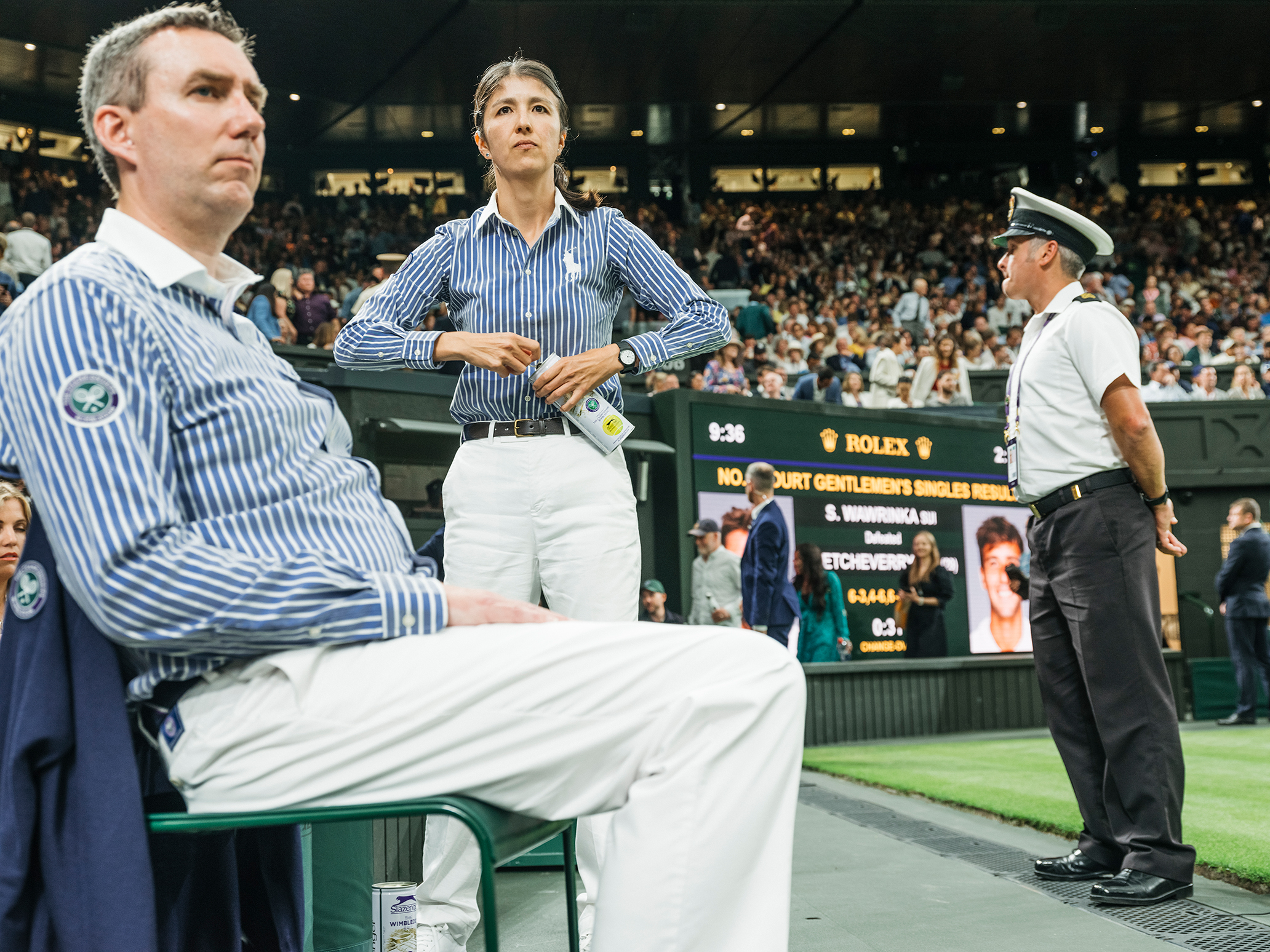

"Canadian Doubles." / MGM Studios
Alex Crockford was 16 when he was selected from more than a thousand aspiring ball boys and girls (BBGs) to serve the Championships. The rigorous training program began four months before Wimbledon’s opening day. A few times a week, about 250 teens from local secondary schools performed wind sprints and ball-rolling exercises on the AELTC grounds. They practiced standing still for long periods of time—sometimes with arms extended overhead—in preparation for long rallies. Years later, one former BBG would compare these drills to his RAF cadet training.
The 2006 tournament was Crockford’s second run as a ball boy. He knew which players liked to towel off between games or maniacally bounce the ball before serving. But this year was different: His green kit was replaced with a sharp blue rucksack. Inside were several pairs of navy T-shirts with hidden mesh panels to help with ventilation, shorts that skimmed the knee, white socks, and a tracksuit for chilly mornings. The two thin green stripes on the shirt collar and championship’s emblem on the sleeve were the only reminders of uniforms past. Now the stitched silhouette of a polo player on horseback—the Ralph Lauren logo—charged across Crockford’s left breast, taking three inches of prime real estate.
Senior court officials were made over too: line judges in navy blazers with white piping over collared button-downs. Umpires in fully lined pin-striped blazers with wide-legged trousers and bias cut skirts. White newsboy caps and Ralph’s signature ties. Men’s clothing designer and Ralph Lauren biographer Alan Flusser remembers the early rounds of the 2006 championship. “I think the first impression was, ‘Who the hell did those clothes?’ All the ball boys and girls and referees looked like they belonged there.”
On opening day, just a few courts over from where Crockford raced after the ball, Bethanie Mattek-Sands appeared for her first-round match against Venus Williams.
Mattek-Sands was known for pushing the fashion envelope. As a junior player, she would wear her aunt’s handsewn creations: graphic skirts, windbreaker sets, and shirts with colorful patches. Over the years, her style was somewhat tempered by sponsors with specific ideas about what she should wear on the court. But Adidas dropped Mattek-Sands as a spokeswoman before the 2006 Wimbledon Championships, and she arrived in London without a pre-appointed look. Scrambling, she made a last-minute trip to Harrods. Mattek-Sands walked onto Centre Court wearing white knee-high socks, a tube top over a tank top, chandelier earrings, and tiny shorts.
Commentators were confused by Mattek-Sands’ wardrobe choice—was she competing in Wimbledon or the World Cup? Andy Murray’s mother told reporters that she would make her son change if he ever wore something like that. To make matters worse, Mattek-Sands was outdressed by tournament officials. The bottom of the chair umpire’s trousers had a crisp pleat. The BBGs were stamped several times over with the Polo logo. “I felt like Wimbledon was really saying we’re posh, we’re dressy, we’re classy. We’re preppy, we’re conservative,” says Mattek-Sands. “A lot of words that maybe didn’t describe me.”
Mattek-Sands has a framed photo of herself from that match. In it she’s walloping a forehand in compression socks and a sweatband. In the background, a female line judge is bending over in a Ralph Lauren striped button-down and a khaki skirt. Mattek-Sands only got one game off Venus that day, but her soccer-inspired outfit won the long game. Shortly after the match, officials approached Mattek-Sands. She thought she was going to get fined for her outfit. Instead, they asked for her socks; AELTC wanted to display them in the prestigious Wimbledon Lawn Tennis Museum.
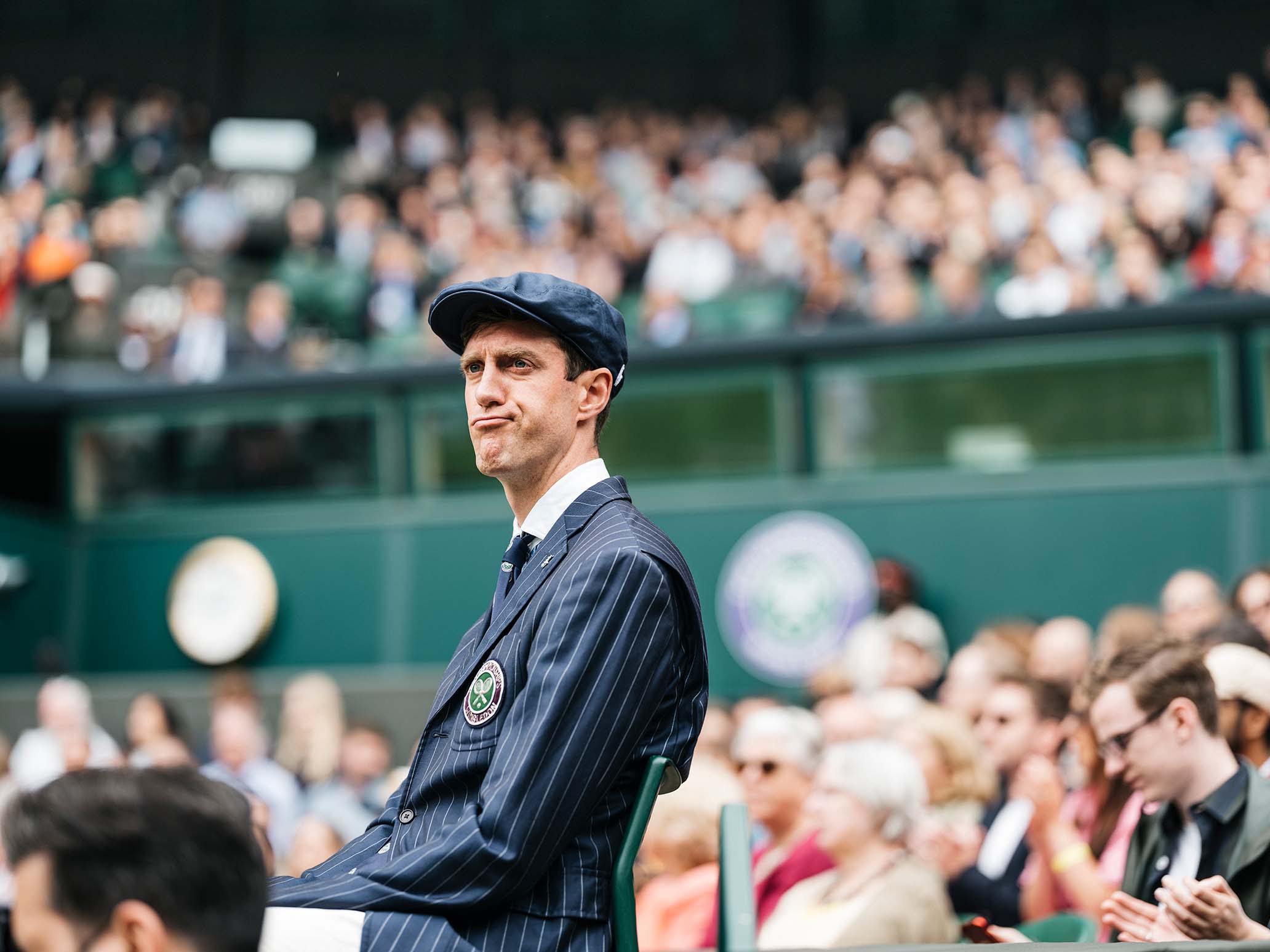

As a teenager in the ’60s, Ralph Lauren (née Lifshitz) taught athletics at Camp Roosevelt in the Catskill Mountains. According to Flusser’s 2019 biography Ralph Lauren: In His Own Fashion, Lauren was enamored with the private school campers, those young men who considered “summer” a verb and would return to the halls of Groton in the fall. This exposure inspired Lauren’s lifelong fascination with blue-blood culture despite never attending an Ivy League school or having family money himself.
Since Lauren couldn’t always play the part, he would look the part. Early in his career, Lauren, an avid jogger, recognized the link between exercise and youthfulness. This was reinforced in the late ’80s, when the country’s fitness obsession and a personal health scare (benign brain tumor) propelled Lauren—quite literally—into motion. In 1992, Ralph Lauren debuted Polo Sport, a line of performance-driven activewear, in the same year as the Barcelona Summer Olympics. Polo Sport quickly became one of the brand’s most valuable collections, beloved by workout junkies as well as hip-hop and skateboard communities.
“There is just an attractiveness about athletes in general,” Lauren said in a 1993 New York Times interview. “Athletic clothes say that people have energy.”
In 2005, Lauren signed a partnership with the US Open to outfit all on-court ball persons and officials. Tennis neatly fit in the world of Ralph Lauren-approved leisure activities for the gentile class and gentile wannabes. Never mind that Lauren barely knew a slice from a drop shot.
In his 1984 bestseller What They Don’t Teach You at Harvard Business School, IMG founder Mark McCormack describes pitching Wimbledon as a conservative investment to advertisers. McCormack writes, “Wimbledon does not have to win tournaments to maintain visibility, and it won’t retire.”
This logic aligned with Lauren’s business interests—he’d been trying to break into the hard-to-reach European market for years. Some progress had been made: In 1981, Lauren opened his first store outside of the United States on London’s tony New Bond Street. Located in a former pharmacy, the Ralph Lauren shop was the first freestanding shop in Europe for an American designer. London was a natural home for Ralph. The city and the designer shared an affinity for tradition and wood mallards.
In spring 2006, AELTC appointed Ralph Lauren over British brands, including Burberry and Aquascutum, also vying for the job. In a statement to the press, former Wimbledon marketing director Rob McCowen explained that Ralph Lauren’s discretion was appealing: “They don’t have big logos all over their shirts.” Evidently McCowen did not appreciate that, while Ralph Lauren shared design sensibilities with the British, his approach to branding was unmistakably American.
Ralph Lauren initially designed a collection of all-white uniforms. An early mistake. AELTC pointed out that all-white would make it challenging to differentiate between players and officials, and sent designers back to the drawing board.
To determine how to integrate color and pattern, Lauren referenced archival photos of Oxford and Cambridge University students playing tennis. Lauren already frequented college campuses: Princeton University was famously a breeding ground for preps (and thus a source for inspiration). Lauren decided that his essential collared shirt would be the Wimbledon collection’s mainstay. The short-sleeved collared shirt was originally designed by French tennis star Jean René Lacoste, who wore it during his consecutive US Open wins in 1926 and 1927. Ralph Lauren repopularized the three-buttoned shirt in 1972, presenting his version as a classier, smarter alternative to Lacoste and the polyester athleticwear that was trendy at the time. He changed the name while he was at it—goodbye tennis shirt, hello Polo—and replaced the alligator with a horse.
Lauren has been accused of stealing designs from the Brits (and others) for years, and he still demonstrates some disregard for provenance. In a 2023 interview for the Financial Times that was conducted on Lauren’s 17,000-acre property in Colorado, Lauren said, “I don’t care if a thing is English, French, antique or modern. It’s whatever appeals to my eye. It’s what works. I just care if it tells a story.” Evidently, his story is a bestseller: The brand currently has 23,000 employed worldwide and announced nearly $6.4B in revenue in 2023.
Podcaster Avery Trufelman, whose series Articles of Interest: American Ivy tracked the evolution of prep, isn’t too concerned with appropriation claims: “What’s more American than stealing from the British?”
The Wimbledon uniforms capture Ralph Lauren’s multicultural influences. There’s British aristocracy, vintage tennis, Ivy League culture. But ultimately, the look is self-referential—and aspirational: Ralph Lifshitz is wearing Ralph Lauren. A Jewish boy from an immigrant family in the Bronx, who first glimpsed the good life teaching gym to privileged campers, recognized a kinship with tournament staff. By elevating their look, he elevated his past.
“Ralph stormed the country club,” Trufelman says. “And he’s let us all in there with him.”
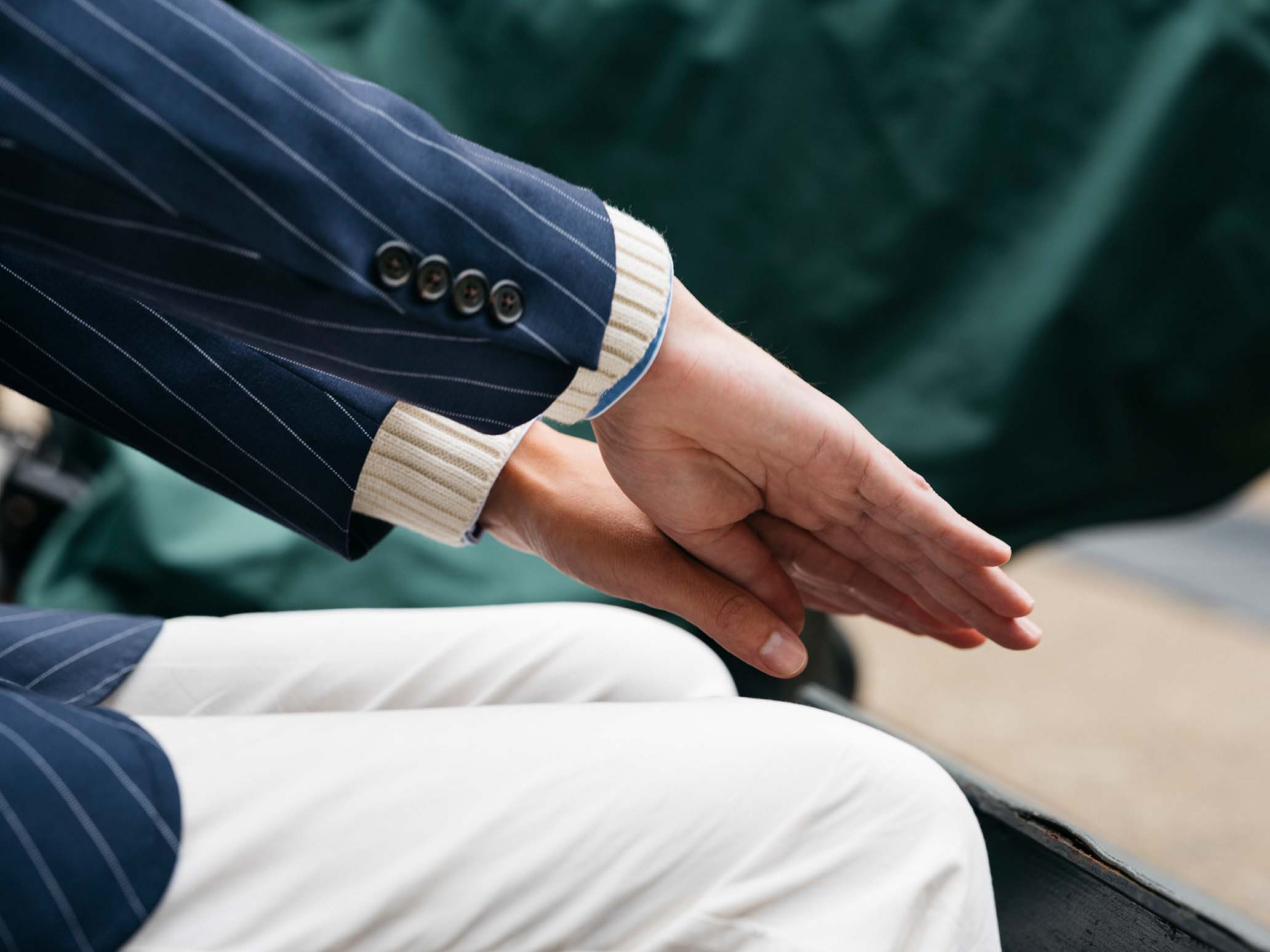


SIGN UP — YOU'RE ONLY AS GOOD AS YOUR SECOND SERVE.
RECOMMENDED
Big House Boris
BOOK REVIEWS
